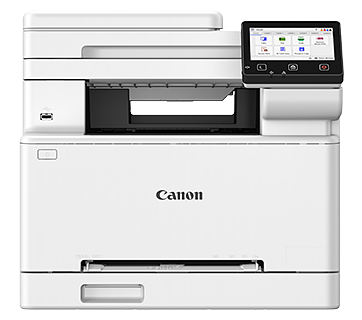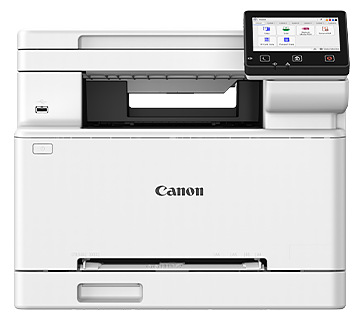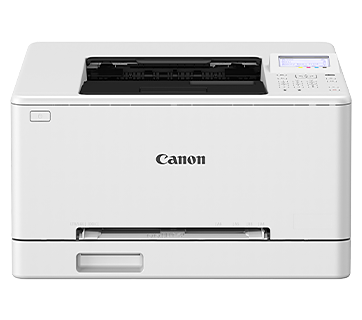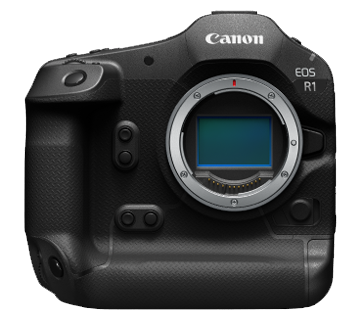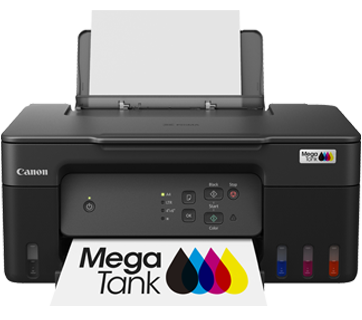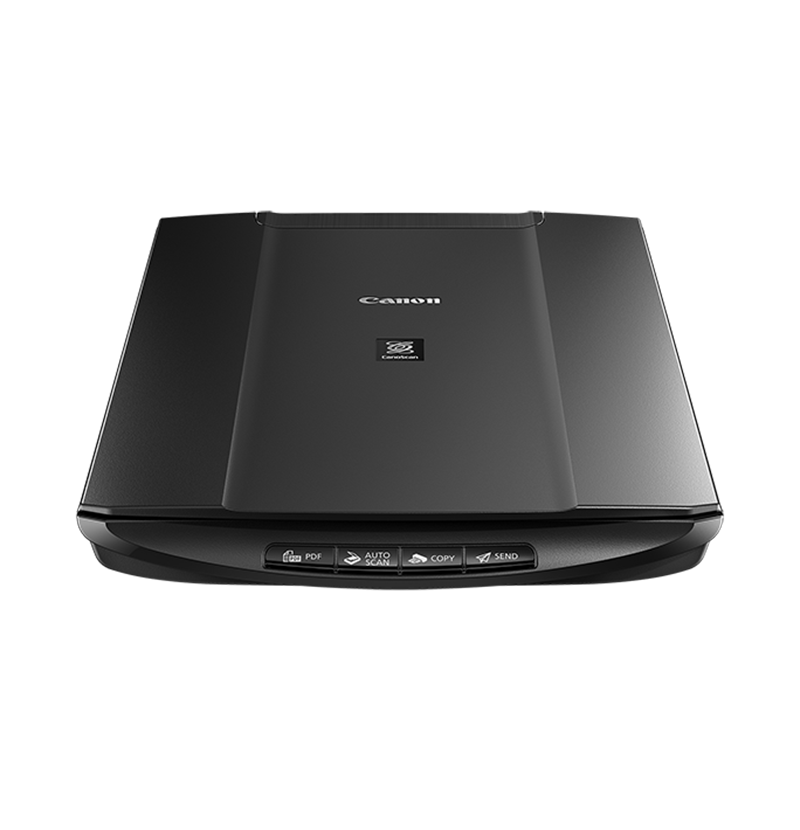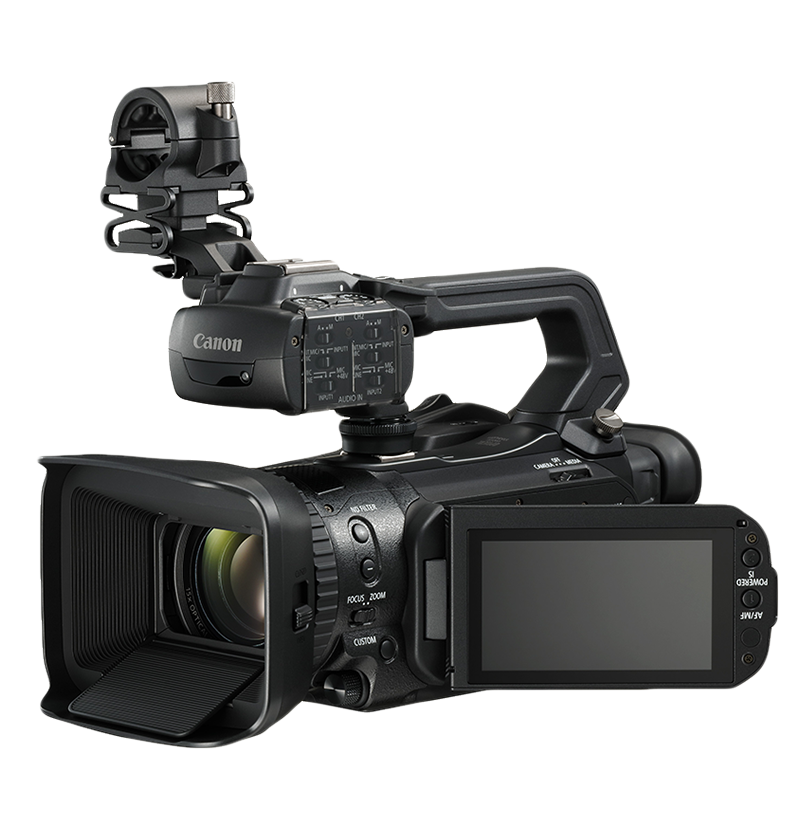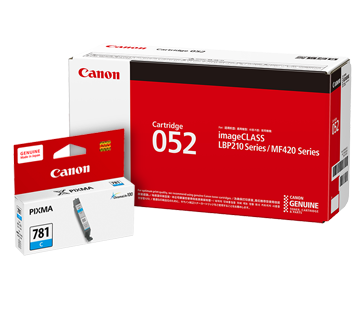Setting File Server (FTP) (UNIX)
Solution
For the settings before using the Scan to File Server function (FTP) (related information), setting the IP address (related information) and setting up the computer as a file server are required.
This section describes how to set up the computer as a file server after the IP address is set.
NOTE
- UNIX users must have Solaris 2.6 or later installed in order to use the computer as an FTP server.
- In some environments, detailed settings may be required in order to use FTP. For details, consult your network manager.
1. Log in to a workstation as a super user.
2. Set up the users who send documents from the machine, and their passwords.
Enter a user name and a password not longer than 24 alphanumeric characters.
3. Create a shared directory to be used for destination addresses, and then enable read access and write access by the users who will be sending data.
To send documents to a file server, specifying address is required.
As well as entering a file server address directly, you can specify the file server address using the Address Book or One-touch registered beforehand. This section describes the instructions on how to register file server addresses in the Address Book or One-touch.
NOTE
- If <Language Switch> in Common Settings is set to <On>, the Host Name and File Path of the file server destination may not be displayed correctly, so you may not be able to refer to them.
- This section describes how to register destinations from the Additional Functions screen. You can also register destinations from the Select Send Type screen, as follows:
- In the Select Send Type screen, use [  ] , [
] , [  ] or
] or  (Scroll Wheel) to select <Address Book>, then press [OK].
(Scroll Wheel) to select <Address Book>, then press [OK].
 ] , [
] , [  ] or
] or  (Scroll Wheel) to select <Address Book>, then press [OK].
(Scroll Wheel) to select <Address Book>, then press [OK].- Press the left Any key to select <Reg/Edit/Erase>.
- Use [  ] , [
] , [  ] or
] or  (Scroll Wheel) to select <Register New Dest. to Add. Book>, then press [OK].
(Scroll Wheel) to select <Register New Dest. to Add. Book>, then press [OK].
 ] , [
] , [  ] or
] or  (Scroll Wheel) to select <Register New Dest. to Add. Book>, then press [OK].
(Scroll Wheel) to select <Register New Dest. to Add. Book>, then press [OK].- Follow the procedure described in this section from step 6.
- Registering destinations in the Address Book is available only for the imageCLASS MF9170C.
- If you use the imageCLASS MF8450C, register destinations in One-touch.
 Storing in the Address Book
Storing in the Address Book1. Press  (Main Menu).
(Main Menu).
 (Main Menu).
(Main Menu).2. Press the right Any key to select <Additional Func.>.
3. Use [  ] , [
] , [  ] or
] or  (Scroll Wheel) to select <Address Book Settings>, then press [OK].
(Scroll Wheel) to select <Address Book Settings>, then press [OK].
 ] , [
] , [  ] or
] or  (Scroll Wheel) to select <Address Book Settings>, then press [OK].
(Scroll Wheel) to select <Address Book Settings>, then press [OK].If a password has been set for the Address Book, enter the password to enter Address Book Settings menu. Enter the password using  -
-  (numeric keys), then press [OK].
(numeric keys), then press [OK].
 -
-  (numeric keys), then press [OK].
(numeric keys), then press [OK].4. Use [  ] , [
] , [  ] or
] or  (Scroll Wheel) to select <Register Address>, then press [OK].
(Scroll Wheel) to select <Register Address>, then press [OK].
 ] , [
] , [  ] or
] or  (Scroll Wheel) to select <Register Address>, then press [OK].
(Scroll Wheel) to select <Register Address>, then press [OK].5. Press the right Any key to select <Register New>.
6. Use [  ] , [
] , [  ] or
] or  (Scroll Wheel) to select <File>, then press [OK].
(Scroll Wheel) to select <File>, then press [OK].
 ] , [
] , [  ] or
] or  (Scroll Wheel) to select <File>, then press [OK].
(Scroll Wheel) to select <File>, then press [OK].7. Use [  ] , [
] , [  ] or
] or  (Scroll Wheel) to select <Register Name>, then press [OK].
(Scroll Wheel) to select <Register Name>, then press [OK].
 ] , [
] , [  ] or
] or  (Scroll Wheel) to select <Register Name>, then press [OK].
(Scroll Wheel) to select <Register Name>, then press [OK].8. Use the software keyboard to enter the recipient's name.
You can enter up to 16 characters for the recipient's name.
9. If you are finished, press the right Any key to select <Set>.
10. Use [  ] , [
] , [  ] or
] or  (Scroll Wheel) to select <Destination Registration>, then press [OK].
(Scroll Wheel) to select <Destination Registration>, then press [OK].
 ] , [
] , [  ] or
] or  (Scroll Wheel) to select <Destination Registration>, then press [OK].
(Scroll Wheel) to select <Destination Registration>, then press [OK].11. Use [  ] , [
] , [  ] or
] or  (Scroll Wheel) to select a server protocol, then press [OK].
(Scroll Wheel) to select a server protocol, then press [OK].
 ] , [
] , [  ] or
] or  (Scroll Wheel) to select a server protocol, then press [OK].
(Scroll Wheel) to select a server protocol, then press [OK].- <FTP>: Select this protocol if you are sending documents to a computer running Sun Solaris 2.6 or later, Mac OS X, Internet Information Services5.0 on Windows 2000 Server, Internet Information Services 5.1 on Windows XP Professional, Internet Information Services 6.0 on Windows Server 2003, Internet Information Services 7.0 on Windows Vista, or Red Hat Linux 7.2.
- <Windows (SMB)>: Select this protocol if you are sending documents to a computer running UNIX/Linux (Samba 2.2.8a or later) or Windows 98/Me/2000/XP/Server 2003/Vista.
- <Windows (SMB): Browse>: Select this protocol if you want to specify a file server connected to a specific network.
12. Use [  ] , [
] , [  ] or
] or  (Scroll Wheel) to select <Host Name>, then press [OK].
(Scroll Wheel) to select <Host Name>, then press [OK].
 ] , [
] , [  ] or
] or  (Scroll Wheel) to select <Host Name>, then press [OK].
(Scroll Wheel) to select <Host Name>, then press [OK].13. Use the software keyboard to enter the host name.
You can enter up to 120 characters for the host name.
NOTE
A host name is a unique name assigned to identify each host computer that provides services on the Internet. In this entry box, enter the name of the file server on the network as the destination of the send job.
14. If you are finished, press the right Any key to select <Set>.
15. Use [  ] , [
] , [  ] or
] or  (Scroll Wheel) to select <Folder>, then press [OK].
(Scroll Wheel) to select <Folder>, then press [OK].
 ] , [
] , [  ] or
] or  (Scroll Wheel) to select <Folder>, then press [OK].
(Scroll Wheel) to select <Folder>, then press [OK].16. Use the software keyboard to enter the path to the folder.
You can enter up to 120 characters for the folder path.
NOTE
- A folder path is a series of characters that signify the location of the folder. Specify a folder in the file server as the destination of the send job.
- If you are sending to an imageWARE Document Manager folder, enter the folder name set in imageWARE Gateway.
17. If you are finished, press the right Any key to select <Set>.
18. Use [  ] , [
] , [  ] or
] or  (Scroll Wheel) to select <User Name>, then press [OK].
(Scroll Wheel) to select <User Name>, then press [OK].
 ] , [
] , [  ] or
] or  (Scroll Wheel) to select <User Name>, then press [OK].
(Scroll Wheel) to select <User Name>, then press [OK].19. Use the software keyboard to enter the user name.
You can enter up to 24 characters for the user name.
NOTE
If you are sending to an imageWARE Document Manager folder, enter the user name set in imageWARE Gateway.
20. If you are finished, press the right Any key to select <Set>.
21. Use [  ] , [
] , [  ] or
] or  (Scroll Wheel) to select <Password>, then press [OK].
(Scroll Wheel) to select <Password>, then press [OK].
 ] , [
] , [  ] or
] or  (Scroll Wheel) to select <Password>, then press [OK].
(Scroll Wheel) to select <Password>, then press [OK].22. Use the software keyboard to enter the password.
You can enter up to 24 characters when <FTP> is selected as the server protocol.
NOTE
If you are sending to an imageWARE Document Manager folder, enter the password set in imageWARE Gateway.
23. If you are finished, press the right Any key to select <Set>.
24. Press the right Any key to select <Done>.
25. Press the right Any key to select <Register>.
26. Press  (Main Menu) to return to the Main Menu screen.
(Main Menu) to return to the Main Menu screen.
 (Main Menu) to return to the Main Menu screen.
(Main Menu) to return to the Main Menu screen. Storing in One-touch
Storing in One-touch1. Press  (Main Menu).
(Main Menu).
 (Main Menu).
(Main Menu).2. Press the right Any key to select <Additional Func.>.
3. Use [  ] , [
] , [  ] or
] or  (Scroll Wheel) to select <Address Book Settings>, then press [OK].
(Scroll Wheel) to select <Address Book Settings>, then press [OK].
 ] , [
] , [  ] or
] or  (Scroll Wheel) to select <Address Book Settings>, then press [OK].
(Scroll Wheel) to select <Address Book Settings>, then press [OK].If a password has been set for the Address Book, enter the password to enter Address Book Settings menu. Enter the password using  -
-  (numeric keys), then press [OK].
(numeric keys), then press [OK].
 -
-  (numeric keys), then press [OK].
(numeric keys), then press [OK].4. Use [  ] , [
] , [  ] or
] or  (Scroll Wheel) to select <Register One-touch>, then press [OK].
(Scroll Wheel) to select <Register One-touch>, then press [OK].
 ] , [
] , [  ] or
] or  (Scroll Wheel) to select <Register One-touch>, then press [OK].
(Scroll Wheel) to select <Register One-touch>, then press [OK].5. Use [  ] , [
] , [  ] or
] or  (Scroll Wheel) to select the One-touch you want to register, then press [OK].
(Scroll Wheel) to select the One-touch you want to register, then press [OK].
 ] , [
] , [  ] or
] or  (Scroll Wheel) to select the One-touch you want to register, then press [OK].
(Scroll Wheel) to select the One-touch you want to register, then press [OK].6. Use [  ] , [
] , [  ] or
] or  (Scroll Wheel) to select <File>, then press [OK].
(Scroll Wheel) to select <File>, then press [OK].
 ] , [
] , [  ] or
] or  (Scroll Wheel) to select <File>, then press [OK].
(Scroll Wheel) to select <File>, then press [OK].7. Use [  ] , [
] , [  ] or
] or  (Scroll Wheel) to select <Register Name>, then press [OK].
(Scroll Wheel) to select <Register Name>, then press [OK].
 ] , [
] , [  ] or
] or  (Scroll Wheel) to select <Register Name>, then press [OK].
(Scroll Wheel) to select <Register Name>, then press [OK].8. Use the software keyboard to enter the file server name.
You can enter up to 16 characters for the file server name.
NOTE
Registered destinations are sorted in the Address Book by name, in the alphabetical order.
9. If you are finished, press the right Any key to select <Set>.
10. Use [  ] , [
] , [  ] or
] or  (Scroll Wheel) to select <Register One-touch Name>, then press [OK].
(Scroll Wheel) to select <Register One-touch Name>, then press [OK].
 ] , [
] , [  ] or
] or  (Scroll Wheel) to select <Register One-touch Name>, then press [OK].
(Scroll Wheel) to select <Register One-touch Name>, then press [OK].11. Use the software keyboard to enter the One-touch name.
You can enter up to 12 characters for the One-touch name.
12. If you are finished, press the right Any key to select <Set>.
13. Use [  ] , [
] , [  ] or
] or  (Scroll Wheel) to select <Destination Registration>, then press [OK].
(Scroll Wheel) to select <Destination Registration>, then press [OK].
 ] , [
] , [  ] or
] or  (Scroll Wheel) to select <Destination Registration>, then press [OK].
(Scroll Wheel) to select <Destination Registration>, then press [OK].14. Use [  ] , [
] , [  ] or
] or  (Scroll Wheel) to select a server protocol, then press [OK].
(Scroll Wheel) to select a server protocol, then press [OK].
 ] , [
] , [  ] or
] or  (Scroll Wheel) to select a server protocol, then press [OK].
(Scroll Wheel) to select a server protocol, then press [OK].- <FTP>: Select this protocol if you are sending documents to a computer running Sun Solaris 2.6 or later, Mac OS X, Internet Information Services 5.0 on Windows 2000 Server, Internet Information Service 5.1 on Windows XP Professional, Internet Information Services 6.0 on Windows Server 2003, Internet Information Services 7.0 on Windows Vista, or Red Hat Linux 7.2.
- <Windows (SMB)>: Select this protocol if you are sending documents to a computer running UNIX/Linux (Samba 2.2.8a or later) or Windows 98/Me/2000/XP/Server 2003/Vista.
- <Windows (SMB): Browse>: Select this protocol if you want to specify a file server connected to a specific network.
15. If you select <FTP> or <Windows (SMB)>, use [  ] , [
] , [  ] or
] or  (Scroll Wheel) to select <Host Name>, then press [OK].
(Scroll Wheel) to select <Host Name>, then press [OK].
 ] , [
] , [  ] or
] or  (Scroll Wheel) to select <Host Name>, then press [OK].
(Scroll Wheel) to select <Host Name>, then press [OK].16. Use the software keyboard to enter the host name.
You can enter up to 120 characters for the host name.
NOTE
A host name is a unique name assigned to identify each host computer that provides services on the Internet. In this entry box, enter the name of the file server on the network as the destination of the send job.
17. If you are finished, press the right Any key to select <Set>.
18. Use [  ] , [
] , [  ] or
] or  (Scroll Wheel) to select <Folder>, then press [OK].
(Scroll Wheel) to select <Folder>, then press [OK].
 ] , [
] , [  ] or
] or  (Scroll Wheel) to select <Folder>, then press [OK].
(Scroll Wheel) to select <Folder>, then press [OK].19. Use the software keyboard to enter the path to the folder.
You can enter up to 120 characters for the folder path.
NOTE
- A folder path is a series of characters that signify the location of the folder. Specify a folder in the file server as the destination of the send job.
- If you are sending to an imageWARE Document Manager folder, enter the folder name set in imageWARE Gateway.
20. If you are finished, press the right Any key to select <Set>.
21. Use [  ] , [
] , [  ] or
] or  (Scroll Wheel)) to select <User Name>, then press [OK].
(Scroll Wheel)) to select <User Name>, then press [OK].
 ] , [
] , [  ] or
] or  (Scroll Wheel)) to select <User Name>, then press [OK].
(Scroll Wheel)) to select <User Name>, then press [OK].22. Use the software keyboard to enter the user name.
You can enter up to 24 characters for the user name.
NOTE
If you are sending to an imageWARE Document Manager folder, enter the user name set in imageWARE Gateway.
23. If you are finished, press the right Any key to select <Set>.
24. Use [  ] , [
] , [  ] or
] or  (Scroll Wheel) to select <Password>, then press [OK].
(Scroll Wheel) to select <Password>, then press [OK].
 ] , [
] , [  ] or
] or  (Scroll Wheel) to select <Password>, then press [OK].
(Scroll Wheel) to select <Password>, then press [OK].25. Use the software keyboard to enter the password.
You can enter up to 24 characters when <FTP> is selected as the server protocol.
NOTE
If you are sending to an imageWARE Document Manager folder, enter the password set in imageWARE Gateway.
26. If you are finished, press the right Any key to select <Set>.
27. Press the right Any key to select <Done>.
28. Press the right Any key to select <Register>.
29. Press  (Main Menu) to return to the Main Menu screen.
(Main Menu) to return to the Main Menu screen.
 (Main Menu) to return to the Main Menu screen.
(Main Menu) to return to the Main Menu screen.
